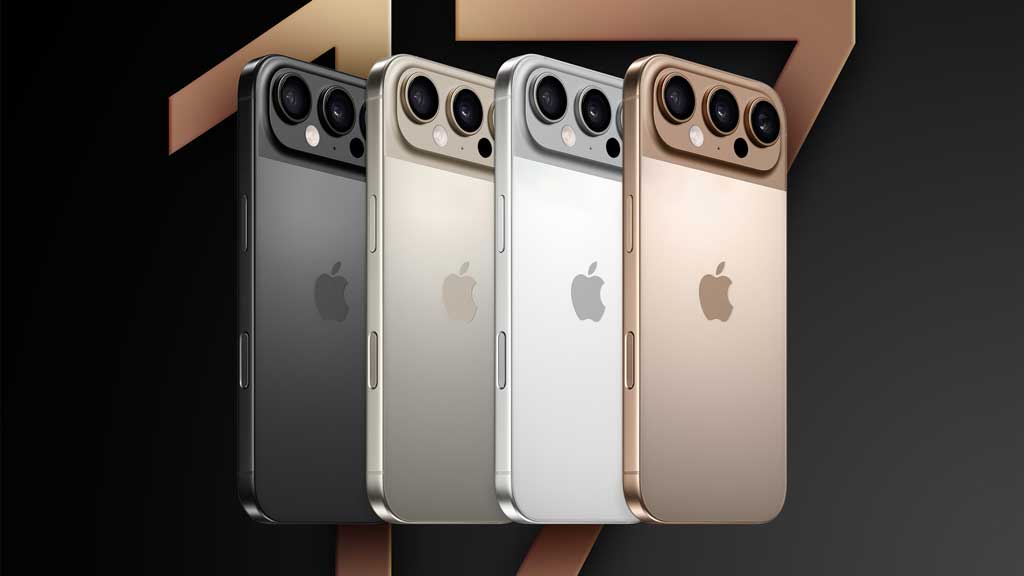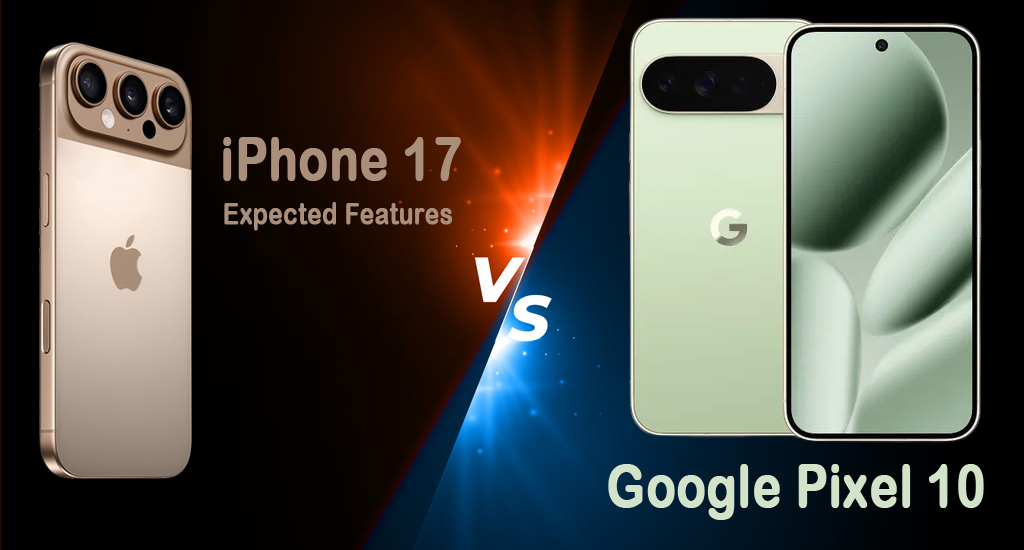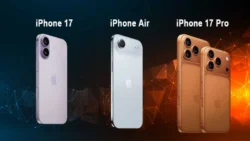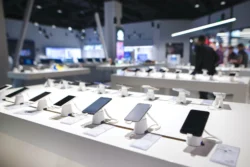The smartphone industry in 2025 is witnessing an unprecedented AI arms race, with Google’s Pixel 10 series, unveiled on August 20, 2025, at the Made by Google event, setting a new standard for AI-driven devices. Boasting the Tensor G5 chip and advanced Gemini AI integration, the Pixel 10 has redefined expectations for on-device intelligence, camera capabilities, and user experience. With Apple’s iPhone 17 series rumored to launch on September 9, 2025, the tech community is eager to see how Apple will respond to Google’s bold advancements. Will the iPhone 17 leverage Apple Intelligence to rival Google’s AI dominance, or will it carve a unique path with hardware innovation and ecosystem synergy? This comprehensive article explores the Pixel 10’s key features and delves into the rumored specifications, design, AI enhancements, and strategic positioning of the iPhone 17 series, analyzing how Apple might counter Google’s challenge.
![]()
Google Pixel 10: Redefining the AI Smartphone Landscape
Google’s Pixel 10 lineup—comprising the Pixel 10, Pixel 10 Pro, Pixel 10 Pro XL, and Pixel 10 Pro Fold—marks a significant leap in smartphone technology, emphasizing AI as the cornerstone of user interaction. Powered by the Tensor G5 chip, built on a 3nm process, the series delivers a 60% faster Tensor Processing Unit (TPU) and a 34% faster CPU compared to its predecessor, enabling robust on-device AI capabilities. Shipments for the main models began on August 28, with the foldable variant arriving on October 9, giving Google a head start in the 2025 flagship race.
Key Features of the Pixel 10 Series
Google’s aggressive push into AI and hardware innovation sets a high bar for Apple. Here are the standout features driving the Pixel 10’s appeal:
- Gemini AI Integration: The Pixel 10 series embeds Google’s Gemini AI, offering seamless, privacy-focused on-device processing. Features include real-time image recognition, audio transcription, and contextual suggestions, such as displaying flight details during airline calls or inserting calendar alerts into messages. The Pixel 10 Pro models include a one-year subscription to Google’s “AI Pro” plan ($19/month thereafter), unlocking advanced AI tools like generative content creation and enhanced virtual assistant capabilities.
- Magic Cue: A flagship AI feature, Magic Cue proactively delivers context-aware information and actions. For example, it can suggest photo edits or pull relevant data during conversations, earning praise for its practical utility and setting a benchmark for AI assistants.
- Camera Innovations: The Pixel 10 series introduces a triple-camera system on Pro models, with a 50MP main sensor, 13MP ultrawide, and an 11MP telephoto lens offering up to 100x zoom via AI-assisted image reconstruction. The “Camera Coach” provides real-time photography guidance, while “Speak-to-Tweak” allows voice-commanded photo edits, such as removing objects or adjusting lighting. Visual Overlays add augmented reality elements, enhancing creative photography.
- Hardware and Design: The Pixel 10 maintains a familiar design with a horizontal camera bar, premium aluminum frame, and Gorilla Glass Victus 2. The Pro models feature Qi2 magnetic wireless charging, aligning with MagSafe-like functionality, and a “Pixelsnap” case with a centered magnetic ring for accessories. The Pixel 10 Pro Fold introduces a redesigned hinge and IP68 water resistance, with dual high-brightness displays (6.4-inch external, 8-inch internal). Screen sizes range from 6.3 inches (Pixel 10 and Pro) to 6.8 inches (Pro XL), all with 120Hz OLED panels and up to 2,700 nits brightness.
- Software and Longevity: Running Android 16, the Pixel 10 series promises seven years of software updates, ensuring longevity through 2032. Features like improved flicker control via high-frequency PWM dimming enhance display comfort, while a potential ultrasonic fingerprint scanner improves biometric security.
- Battery and Charging: The Pixel 10 is rumored to house a 4,970mAh battery, significantly larger than previous models, with faster charging capabilities. The adoption of Qi2 wireless charging broadens accessory compatibility, challenging Apple’s MagSafe ecosystem.
Google’s strategic early launch and AI focus position the Pixel 10 as a formidable competitor, pressuring Apple to deliver a compelling response with the iPhone 17 series.

iPhone 17 Lineup: Rumored Models and Design Evolution
Apple is expected to unveil the iPhone 17 series on September 9, 2025, with pre-orders starting September 12 and availability from September 19. The lineup is rumored to include four models: iPhone 17, iPhone 17 Air (replacing the Plus), iPhone 17 Pro, and iPhone 17 Pro Max, with an iPhone 17e potentially following in Spring 2026. This shift introduces a new “Air” model, emphasizing a sleek, ultra-thin design to compete with slim competitors like the Samsung Galaxy S25 Edge and Huawei’s offerings.
Design and Build Innovations
Apple is poised to make significant design changes, potentially in response to the Pixel 10’s refined aesthetics and magnetic accessory support:
- iPhone 17 Air: The Thinnest iPhone Ever: Rumored to measure just 5.5–6.25mm thick, the iPhone 17 Air could be Apple’s slimmest device yet, outpacing the Pixel 10’s 8.6mm profile. With a 6.65-inch LTPO OLED display, it prioritizes portability but may compromise with a smaller 2,800mAh battery, a single 48MP rear camera, and no bottom speaker (relying on the earpiece). The use of a titanium-aluminum alloy frame aims to prevent bending, addressing concerns about structural integrity in ultra-thin designs. Colors may include Black, White, Light Blue, and Light Gold (Pantone 11-0604 TPG Gardenia).
- Pro Models: Material and Camera Redesign: The iPhone 17 Pro and Pro Max are expected to shift from titanium to aluminum frames, reducing weight and cost while maintaining premium aesthetics. A new rectangular camera bar spanning the device’s width, housing three 48MP lenses (main, ultrawide, and telephoto with 3.5–8x optical zoom), marks a departure from the traditional triangular camera layout. This design echoes the Pixel 10’s horizontal camera bar but positions the flash and sensors differently for aesthetic distinction. Colors may include Black, White, Gray, Dark Blue (Pantone 19-4025 TPG Mood Indigo), and a bold Orange (Pantone 1501243 TCX Papaya).
- Display Upgrades: All iPhone 17 models are rumored to feature 120Hz LTPO OLED displays, a significant upgrade from the 60Hz panels on non-Pro iPhones. The base iPhone 17 and Pro may sport 6.3-inch screens, while the Pro Max could reach 6.86 inches, and the Air 6.65 inches. Enhanced brightness (up to 2,000 nits) and slimmer bezels aim to match or exceed the Pixel 10’s vibrant Actua OLED displays. An anti-reflective, scratch-resistant coating could further elevate durability.
- Dynamic Island and Ergonomics: The Dynamic Island, a staple since the iPhone 14 Pro, is expected to be refined in iOS 19, potentially with new animations or functionality. The repositioned Apple logo, centered over the MagSafe charging area, enhances aesthetic balance. The iPhone 17 series retains IP68 water and dust resistance and USB-C ports, aligning with industry standards.
These design changes position the iPhone 17 as a visually distinct competitor to the Pixel 10, emphasizing premium materials and a sleek form factor while addressing Google’s hardware advancements like Qi2 charging.
iPhone 17’s AI and Software: Countering Google’s Gemini
Apple Intelligence, introduced in 2024, is expected to evolve significantly in iOS 19, powering the iPhone 17 series to rival Google’s Gemini AI. The Pixel 10’s Magic Cue and Camera Coach have set a high bar for proactive and creative AI, prompting Apple to enhance its ecosystem-driven intelligence.
AI and Software Enhancements
- Advanced Siri and Contextual AI: Apple is likely to bolster Siri with ChatGPT-style capabilities, enabling more natural, context-aware interactions. Rumored features include on-device summarization for emails, texts, and Safari pages, as well as proactive suggestions akin to Magic Cue. For example, Siri could recommend calendar events based on Messages conversations or suggest photo edits during sharing. Live translation in Phone, FaceTime, and Messages is expected, directly competing with Pixel’s real-time transcription capabilities.
- On-Device Processing with A19 Chips: The iPhone 17 series is rumored to feature the A19 chip (base model) and A19 Pro (Pro models), both built on a 3nm process with enhanced neural engines for faster, privacy-focused AI processing. The Pro models may include 12GB of RAM, up from 8GB, to support demanding AI tasks like generative content creation or real-time video editing. This could help Apple close the gap with the Tensor G5’s AI efficiency, which powers the Pixel 10’s on-device features.
- Camera AI Innovations: All iPhone 17 models are expected to feature a 24MP TrueDepth front camera, doubling the resolution of the iPhone 16’s 12MP sensor for sharper selfies and 2x zoom capabilities. The Pro models’ 48MP triple-camera system could enable 8K video recording and advanced AI-driven features, such as improved object removal, scene optimization, and depth-of-field control via a rumored mechanical aperture. These enhancements aim to rival the Pixel 10’s Camera Coach and Speak-to-Tweak editing tools, offering users intuitive, AI-powered photography.
- Ecosystem Synergy: Unlike Google’s Android ecosystem, which faces fragmentation, Apple’s strength lies in seamless AI integration across iPhone, iPad, Mac, and Apple Watch. iOS 19 may introduce cross-device AI workflows, such as editing a photo on iPhone and continuing on a Mac, or using Siri to control smart home devices with context from the iPhone. This ecosystem advantage could differentiate the iPhone 17 from the Pixel 10, appealing to Apple loyalists.
Apple’s focus on privacy-first AI, leveraging on-device processing, could counter Google’s privacy narrative while offering a more cohesive user experience across devices.
Performance, Connectivity, and Additional Hardware Features
Beyond AI and design, the iPhone 17 series is expected to introduce several hardware advancements to compete with the Pixel 10’s robust specifications:
- Chipset and Performance: The A19 and A19 Pro chips, built on a 3nm process, promise significant improvements in CPU, GPU, and neural engine performance. The Pro models may incorporate vapor chamber cooling to manage heat during intensive tasks like gaming or AI processing, a feature also rumored for the Pixel 10 Pro but absent in the base Pixel 10. This could give Apple an edge in sustained performance.
- Battery Life and Charging: The iPhone 17 Pro Max is rumored to feature a 5,000mAh battery, the largest in iPhone history, addressing the Pixel 10’s 4,970mAh cell. The base iPhone 17 and Air may have smaller batteries (around 3,600mAh and 2,800mAh, respectively) due to their slim designs. Enhanced 50W MagSafe charging could match or exceed the Pixel 10’s Qi2 wireless charging speeds, maintaining Apple’s leadership in magnetic accessory ecosystems. A new “TechWoven” case material with a crossbody strap option may further enhance MagSafe functionality.
- Connectivity: Wi-Fi 7 support is expected across the iPhone 17 lineup, offering faster speeds and lower latency than the Pixel 10’s Wi-Fi 6E. Apple’s rumored in-house 5G modem, debuting in the iPhone 17 Air, could improve power efficiency but may lack mmWave support to maintain the slim design. The Pixel 10’s universal 5G compatibility gives it a slight edge in global connectivity.
- Camera System: Beyond AI enhancements, the iPhone 17 Pro’s 48MP telephoto lens with 3.5–8x optical zoom and a potential mechanical aperture offers greater control over depth of field, a feature rare in smartphones. The base iPhone 17 is expected to retain a dual-camera setup (48MP main, 12MP ultrawide), slightly trailing the Pixel 10’s triple-camera system with 5x telephoto zoom. However, Apple’s computational photography, enhanced by Apple Intelligence, could bridge this gap.
- Biometrics and Security: The iPhone 17 series will likely stick with Face ID, refined for faster recognition, while the Pixel 10 may upgrade to an ultrasonic fingerprint scanner. Apple’s decision to forgo under-display Touch ID may disappoint some users but aligns with its focus on facial recognition reliability.
These hardware advancements position the iPhone 17 as a premium contender, balancing cutting-edge technology with Apple’s signature build quality.
Strategic Positioning: How Apple Might Respond to Google’s AI Lead
Google’s Pixel 10 has set a new benchmark for AI-driven smartphones, with features like Magic Cue and Camera Coach appealing to tech enthusiasts seeking practical, innovative tools. Apple’s response with the iPhone 17 will likely hinge on three key strategies:
- Ecosystem Integration: Apple’s closed ecosystem allows for seamless AI experiences across devices, a strength Google cannot fully replicate due to Android’s diversity. Features like cross-device AI workflows and enhanced iCloud integration could make the iPhone 17 more appealing to users invested in Apple’s ecosystem.
- Refined User Experience: While Google emphasizes raw AI power, Apple is known for polishing features to ensure intuitive usability. Enhanced Siri, streamlined photo editing, and proactive suggestions could match the Pixel 10’s functionality while feeling more user-friendly.
- Premium Hardware and Design: The iPhone 17 Air’s ultra-thin design and the Pro models’ aluminum frames and advanced displays aim to differentiate Apple’s offerings from the Pixel 10’s iterative design. By prioritizing aesthetics and build quality, Apple could appeal to users valuing form as much as function.
Pricing and Market Outlook
Both the Pixel 10 and iPhone 17 are expected to start at around $799–$849 for their base models, with the iPhone 17 Air priced at $899–$949, the Pro at $999–$1,049, and the Pro Max at $1,199–$1,249. The Pixel 10’s pricing remains competitive, especially with its seven-year software update commitment, while Apple’s premium pricing reflects its brand prestige and ecosystem benefits. Potential U.S. tariffs could increase iPhone 17 prices, making the Pixel 10 a more value-driven option for budget-conscious buyers.
Conclusion: A Defining Moment for Smartphones in 2025
The Google Pixel 10’s launch has ignited excitement, positioning Google as a leader in AI-driven smartphones with its Tensor G5 chip, Gemini AI, and innovative features like Magic Cue and Camera Coach. Apple’s iPhone 17, expected in just weeks, is poised to counter with a bold lineup featuring the ultra-thin iPhone 17 Air, advanced A19 chips, and enhanced Apple Intelligence in iOS 19. By combining cutting-edge hardware, ecosystem synergy, and refined AI, Apple aims to reclaim its position as the premium smartphone leader. This fierce rivalry benefits consumers, driving innovation and delivering devices that blend intelligence, creativity, and style. As Apple’s September event approaches, all eyes are on Cupertino to see how the iPhone 17 will shape the future of smartphones.






